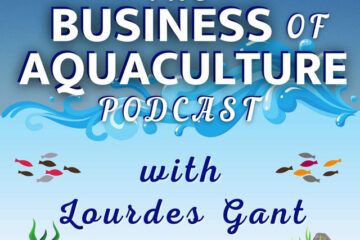In March 2023 the EU commission adopted the Green Claims Directive proposal, with the aim to reduce greenwashing and protect consumers from false or misleading claims on sustainability. But how can this new proposal impact the blue bioeconomy and the feasibility of new products´ market strategies?
An EC inventory done in 2020 shows that 53% of claims about “green” products are vague, misleading or state unfounded environmental information, and 40% are unsubstantiated, meaning there is no science to support or confirm it [1]. Environmental impact is important for consumer choices [2] and 40% of consumers are willing to pay more for a verified green claim or label[3], but still consumers generally lack trust in environmental claims [4]. Also, more than half of ecolabel verifications are weak or not done at all [5], and third-party verifications could effectively increase this trust [6]. This lack of transparence and quality undermines the purpose of sustainable products acquiring these labels even though there is a clear business advantage, and hence increases the risk of greenwashing and makes consumer understanding and informed choice-making more difficult as comparability is greatly reduced and/or more difficult.
This is why the European Commission has now proposed a Green Claims Directive (GCD) [7], but there have been many question marks regarding the proposal. What does the green claims proposal entail, how does it relate to existing regulations regarding marketing, and for SeaMark is important to understand how the new legislation will affect sustainable products´ market strategies and the blue bioeconomy in general.
The proposal and the amended Unfair Commercial Practices Directive
The GCD will be complimentary to the Unfair Commercial Practices Directive (UCPD)[8], which sets general principles on consumer protection and explains how companies should back claims and business-to-consumer (B2C) commercial communication.
In the amended UCPD (adopted in January 2023, entering into application in two years’ time) the definition of an environmental claim is a claim or brand-/product name that is stating or implying;
- positive impact on the environment,
- no impact on the environment,
- that it is less damaging than other products,
- or that is has reduces impact over time.
It also defines green claims as voluntary and can be presented in any kind of commercial communication, such as text, symbolic, graphic, etc.
The amended UCPD also bans all generic environmental claims if there are no specifications or details about it. E.g. calling a product “green”, “sustainable” or “climate neutral” is prohibited without scientific support. Also, all labels that are not based on certification schemes are banned, meaning the product needs to meet the requirements of a third-party certification to obtain the label. If claiming future performance, there needs to be a clear implementation plan regularly verified by in independent third party. The final amendment states that a product cannot use green claims if they have been obtained by GHG emission offsetting. However, companies can still use offsetting and claim e.g. climate neutrality, if sufficiently supported.
The GCD will, similarly to the UCPD, specify how claims should be substantiated, and also only apply to B2C commercial communication, but will be specific for environmental claims. It has four focus areas substantiation, communication, labelling and verification, and which are summarized below. The GCD will not apply to environmental claims regulated by other EU policy, e.g. EU labels such as the Organic Label [9].
Substantiation of environmental claims must be provided using widely recognized scientific evidence and taking relevant international standards into consideration. Also, this has to be demonstrated to be relevant from a life cycle perspective, meaning that over-all negligeable improvements in a product value chain can´t be claimed as having a positive environmental impact, nor if they result in a negative impact elsewhere in the lifecycle (unless substantially net positive) which then has to be identified. It does not necessarily mean a full life-cycle assessment (LCA) needs to be presented, as it is not always suitable for every claim. There are also a specifications for companies on the transparency of using GHG offsets, and quality and correctness in offset accounting.
Communication of environmental claims can only be done on what has been substantiated according to the specifications laid out. UCPD communication rules must also be followed. This substantiation also has to be made available to consumers with the claim. I.e. the full substantiation does not necessarily need to be presented directly with the claim, but must be easily accessible with a QR code, link or other reference.
The regime for environmental labelling also sets rules for environmental certification schemes, to avoid proliferation of schemes on the EU market and reinforce trust in existing ones. The labels must be based on schemes with independent and transparent governance, which is laid out in more detail. No new public or private schemes are allowed on national or regional level, also to reduce the number of schemes and harmonize labels across member states. New public schemes can be allowed if they provide an added value to the EU market. The GCD bans aggregated scoring schemes that combines impacts to an over-all score, if not based on an EU adopted methodology.
The verification of claims and labels has to be done ex-ante, meaning that any company who wants to make a claim need to go to an accredited verifier before the claim is made. This creates a certificate of conformity recognized across member states, and if you have the label or make the claim it can be used anywhere.
Microenterprises [10] are exempt from GHG offsetting requirements as well as the verification, as they are often to small for the effort to be justifiable. They are still obliged to UCPD rules and bans, and they can opt in if they wish to receive a certificate. The Commission also proposes support to SMEs and microenterprises to create support for. E.g. obtaining necessary data or compliance assistance.
The GCD proposal was adopted by the commission in March 2023, and is now at the second stage of a co-decision with the EU Parliament and Council. The parliament adopted its position in March 2024, and the Council its general approach in early June. The proposal can now be discussed, and adoption into EU law is expected in early 2025. After this, there is a transposition time of 18 months for member states to integrate the Directive into national policy, and the application of the Directive is an additional 6 months after this.

Sustainability in market strategies
As described above, sustainability can be an important selling-point form products, and the use of sustainability in go-to-market (GTM) strategies in the algae industry are very common. For SeaMark, sustainability is mentioned as a strength in all 12 products developed, but this can come in many forms and shapes.
Using seaweed to make products can have environmental impacts in many parts of the value chain:
- Cultivated seaweed can provide ecosystem services during cultivation, such as increase biodiversity, act as a carbon sink or absorbing nutrients and reducing eutrophication.
- Harvesting wild seaweed can reduce dispersion invasive or harmful species, an hence having a positive environmental effect by reducing negative impact.
- Sustainable production also has a low environmental footprint by reducing land use and avoiding use of water and fertilizer, e.g. low impact in comparison to cultivation of other crops.
- By avoiding emissions from transportation, more locally produced products are considered more sustainable.
- Sustainable processing such as fermentation or new technologies for extraction have a reduced impact compared to other processing methods, such as drying which requires much energy or chemically intense extraction.
- Sustainability in use by reducing the use of synthetic materials and non-renewables, such as crude oil for plastic, or avoiding microplastic pollution with alternative materials.

Illustration of possible carbon pathways for seaweed products. Credit: Sophie Koch (Sjókovin) and Maya Miltell (SUBMARINER).
It is clear that there is an opportunity for algae products as a “sustainable” resource. There is a global trend to opt for sustainable products and services in both B2C and B2B (business -to-business), and the demand increases for sustainable alternatives and “natural” products. This also drives the regulatory pressure, such as the EU taxonomy, to streamline the use of this vocabulary and claims.
In SeaMark, most products developed are sold B2B, and here the regulation of claims also become a question mark. Further, how can a green claim trickle down the consumer chain? It is very important also for B2B companies to understand the requirements on them for later steps to get a product to the end consumer, as it can be as important for their market strategy and create competitive selling points.
The complexity of quantification
The GCD will provide well welcome guidelines on what is required, but also “good enough”, when communicating with consumers. It will give a fairer playground for products that have substantial positive environmental effects and make greenwashing more difficult. It will help to hinder insufficiently specified or unverifiable methodologies for impact assessment. However, it is important to realize delimitations of scope is needed to make a quality quantification, which might not reflect the entire impact of the product. As seen in the illustration above, it can even be hard to decide on the timeframe of the LCA, as we have short and long carbon cycles, but we also have even shorter cycles of each cultivation season.
As we have seen, sustainability claims are complex, in particular when targeting consumers. Both when making a legally sound market strategy as there often are multiple aspects of sustainability, such as carbon reduction, emission avoidance, biodiversity impacts or other ecosystem services, but also in terms of the communication and clarity. So, how do we quantify sustainability for communication?
To ensure the GCD also can be used as a positive driver for sustainable product marketing, it would be needed to provide means for claiming product sustainability based on biodiversity impacts. Approved methods for this quantification are needed, and not readily available today.
SeaMark is working on a methodology for biodiversity impact quantification and will provide policy and stakeholder feedback on the matter. Also, SeaMark will highlight the importance of sustainability claims in the go-to-market strategies for the individual products, and how the GCD might influence also B2B strategies. These results can help shape the GCD to be robust and helpful for the quickly changing and developing blue economy market. We look forward to following the developments, and we welcome the step towards more trustful environment for green claims for consumers.
Big thanks to Eva Funcken from DG ENVI, Christine Konnertz-Häußler from GPKH Rechtsanwälte, Jean-Baptiste Thomas from KTH and of course SeaMarks own Morten Heide from NOFIMA for the very insightful seminar.
[1] Environmental claims in the EU: Inventory and reliability assessment Final report, European Commission 2020. Available at https://ec.europa.eu/environment/eussd/smgp/pdf/2020_Greenclaims_inventory.zip
[2] Special Eurobarometer 535
[3] BEUC (2023). The Great Green Maze- How environmental advertising confuses consumers https://www.beuc.eu/sites/default/files/publications/BEUC-X-2023-149_The_Great_Green_Maze_How_environmental_advertising_confuses_consumers.pdf
[4] Environmental performance of products & businesses – substantiating claims (europa.eu)
[5] Gorton M.,Tocco, B. & Yeh C -H. & Hartmann M.. (2021). What determines consumers’ use of eco-labels? Taking a close look at label trust. Ecological Economics. 189. 107173. 10.1016/j.ecolecon.2021.107173.
[6] (2021). Preparatory study to gather evidence on ways to empower consumers to play an active role in the green transition. Available at Proposal for a Directive on empowering consumers for the green transition and annex (europa.eu)




0 Comments